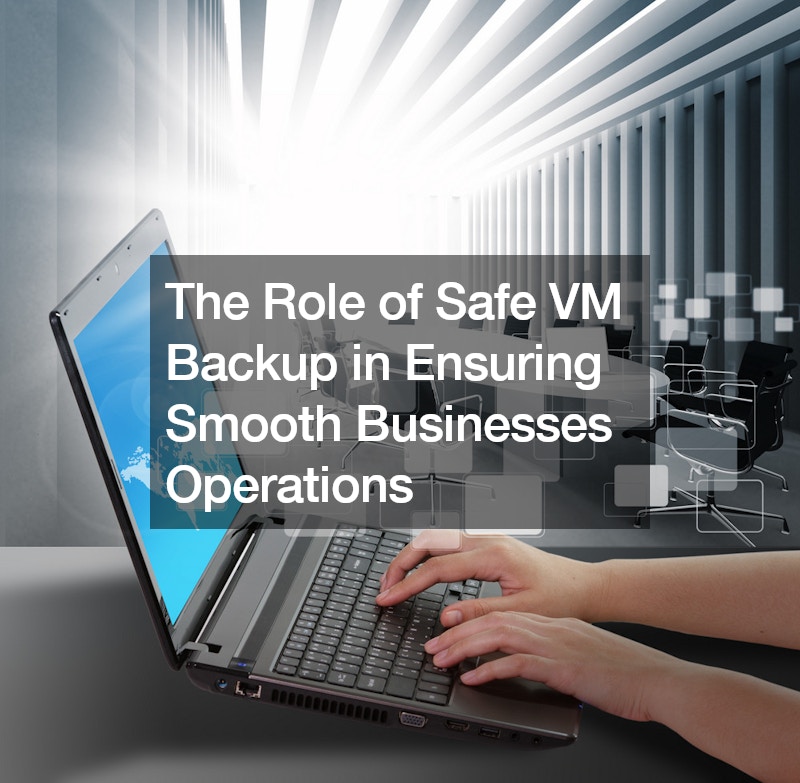In today’s digital era, businesses rely heavily on virtual machines (VMs) to optimize their IT infrastructure and ensure operational efficiency. Virtualization offers significant benefits, including cost savings, improved resource utilization, and enhanced disaster recovery capabilities. However, as with any critical IT asset, the data and applications hosted on VMs must be adequately protected. Implementing a robust and safe VM backup strategy is crucial for maintaining business continuity and safeguarding against data loss. In this article, we will explore the role of safe VM backup in ensuring smooth business operations.
The Importance of Virtual Machines in Modern Businesses
Virtual machines have become integral to modern business operations due to their versatility and efficiency. By allowing multiple operating systems and applications to run on a single physical server, VMs maximize resource utilization and reduce hardware costs. Businesses use VMs for various purposes, including:
Development and Testing: VMs provide a flexible and isolated environment for software development and testing.
Server Consolidation: By consolidating multiple servers into fewer physical machines, businesses can reduce energy consumption and operational costs.
Disaster Recovery: VMs facilitate rapid recovery from hardware failures, ensuring minimal downtime and data loss.
Given these critical roles, the protection of VM data through a safe VM backup strategy is essential.
Understanding Safe VM Backup
Safe VM backup refers to the process of creating secure, reliable copies of virtual machine data to ensure its availability in case of data loss, corruption, or disasters. A safe VM backup strategy encompasses several key components:
Regular Backups: Performing regular backups to capture the latest data and changes.
Automated Processes: Automating backup processes to minimize human error and ensure consistency.
Secure Storage: Storing backup data in secure locations, both on-premises and in the cloud, to protect against physical and cyber threats.
Rapid Recovery: Ensuring that backup data can be quickly restored to minimize downtime and disruption to business operations.
Benefits of Safe VM Backup
Data Protection and Recovery
The primary benefit of a safe VM backup is data protection. Regular backups ensure that critical business data is not lost due to hardware failures, software issues, or cyberattacks. In the event of data loss or corruption, having reliable backups allows businesses to quickly restore their VMs to a previous state, minimizing the impact on operations.
Business Continuity
Business continuity is vital for maintaining customer trust and satisfaction. Downtime can result in lost revenue, damaged reputation, and decreased productivity. Safe VM backup solutions enable businesses to recover from disruptions swiftly, ensuring that operations continue with minimal interruption. This is particularly important for industries that rely on continuous access to data and applications, such as finance, healthcare, and e-commerce.
Compliance and Legal Requirements
Many industries are subject to stringent data protection regulations and legal requirements. Implementing a safe VM backup strategy helps businesses comply with these regulations by ensuring data integrity, availability, and security. Regular backups and secure storage practices demonstrate a commitment to protecting sensitive information, reducing the risk of legal penalties and reputational damage.
Cost Efficiency
Investing in safe VM backup solutions can result in long-term cost savings. The cost of data loss, including lost productivity, recovery efforts, and potential legal penalties, can be substantial. By proactively implementing a robust backup strategy, businesses can mitigate these risks and avoid costly downtime. Additionally, modern backup solutions often include features such as deduplication and compression, which optimize storage usage and reduce costs.
Key Considerations for Implementing Safe VM Backup
Backup Frequency and Scheduling
Determining the appropriate backup frequency and scheduling is critical for ensuring that backups capture the most recent data while minimizing the impact on system performance. Businesses should assess their data change rate, recovery time objectives (RTO), and recovery point objectives (RPO) to establish a suitable backup schedule.
Storage Solutions
Choosing the right storage solutions is essential for safe VM backup. Businesses should consider a combination of on-premises and cloud storage to ensure data redundancy and accessibility. Cloud storage offers scalability, offsite protection, and simplified disaster recovery, while on-premises storage provides faster access to backup data.
Security Measures
Protecting backup data from unauthorized access and cyber threats is paramount. Businesses should implement encryption, access controls, and regular security audits to safeguard backup data. Additionally, backup solutions should include ransomware protection features to detect and prevent malicious attacks.
Testing and Validation
Regularly testing and validating backups is crucial to ensure that data can be successfully restored when needed. Businesses should conduct periodic recovery drills to verify the integrity of backup data and identify any potential issues. This proactive approach ensures that backup processes are effective and reliable.
Conclusion
In the dynamic and fast-paced business environment, ensuring the continuity and security of operations is paramount. Safe VM backup plays a critical role in protecting virtual machine data, enabling rapid recovery from disruptions, and maintaining business continuity. By implementing a comprehensive and secure backup strategy, businesses can safeguard their valuable data, comply with regulatory requirements, and achieve long-term cost efficiency. As virtualization continues to evolve, the importance of safe VM backup will only grow, making it an indispensable component of modern IT infrastructure.
.



